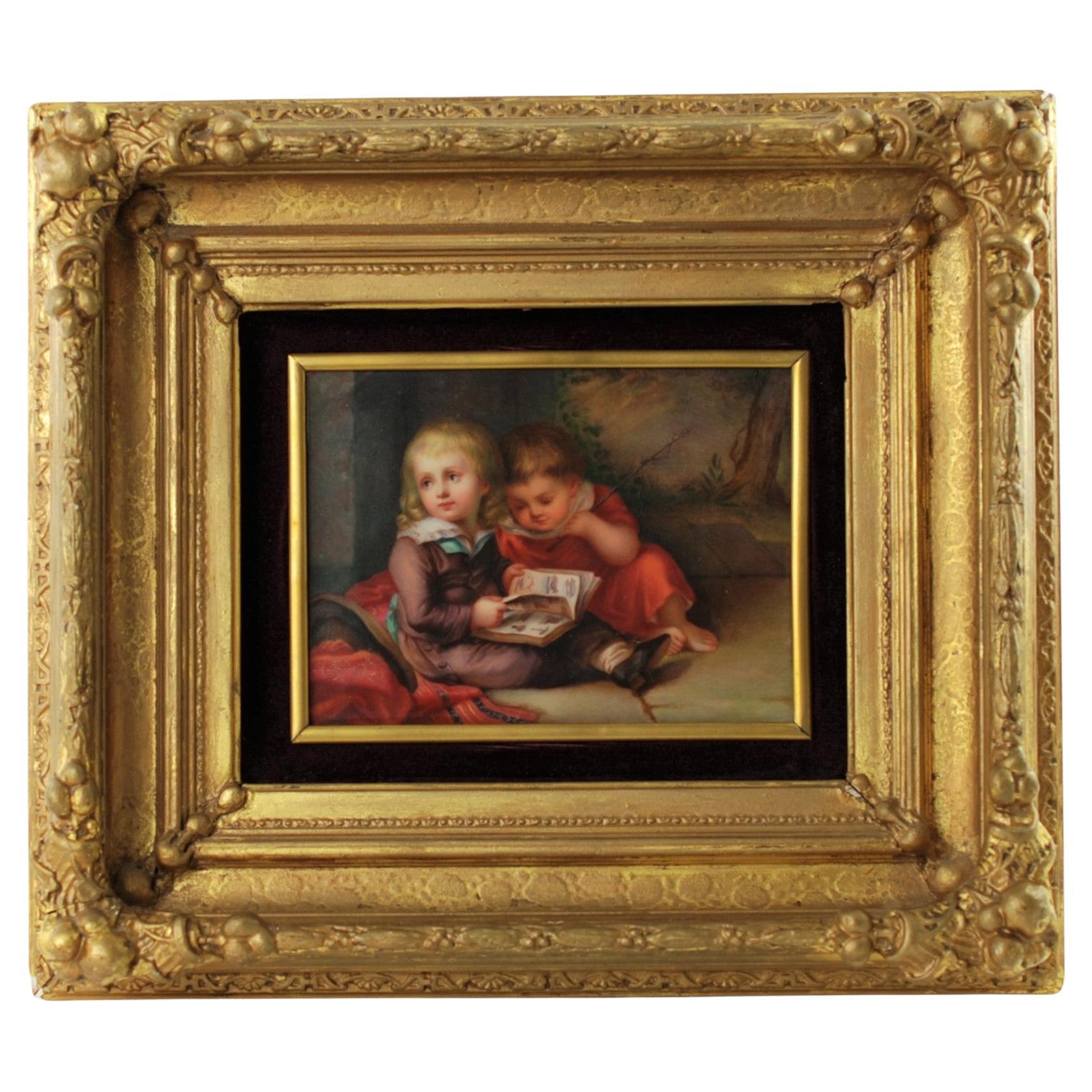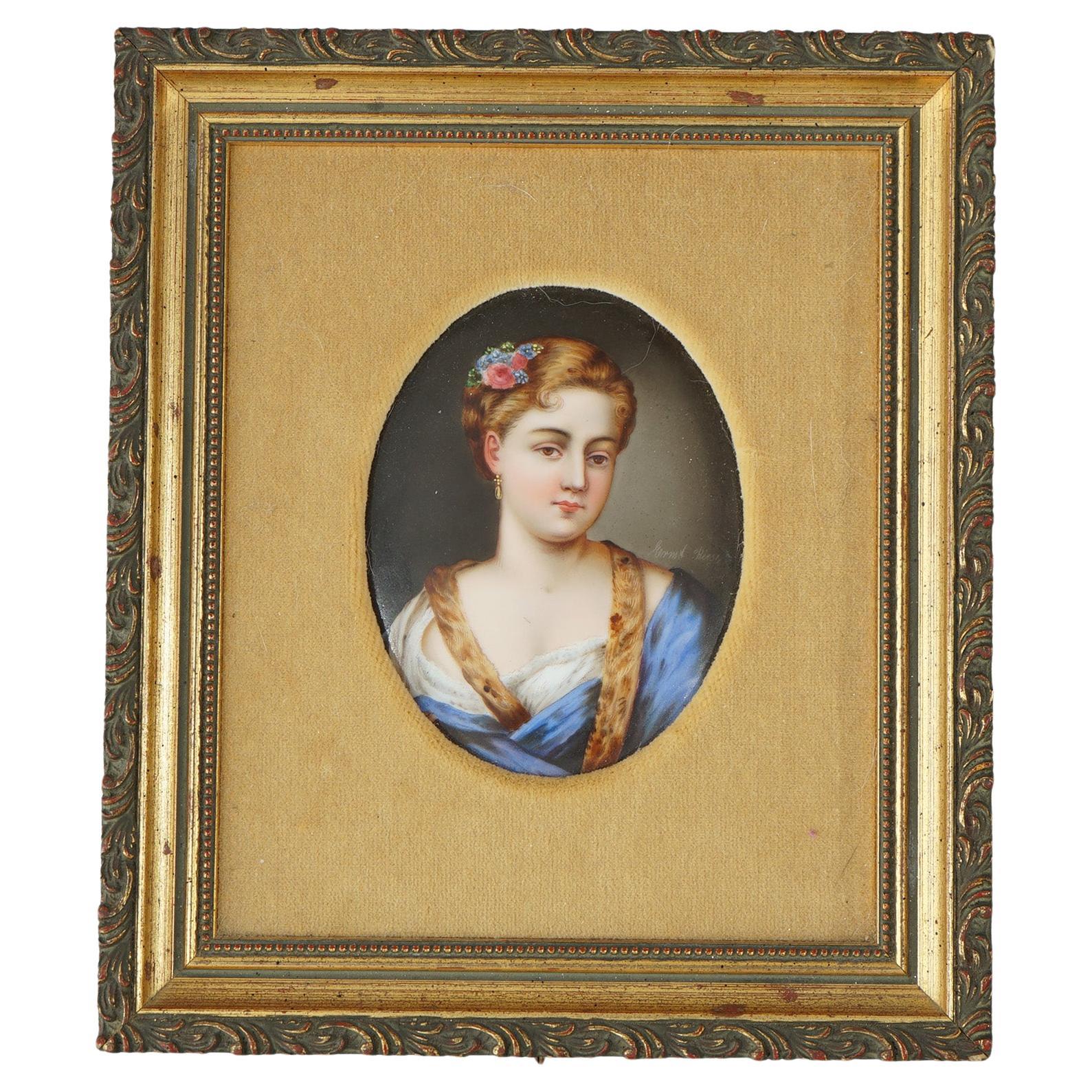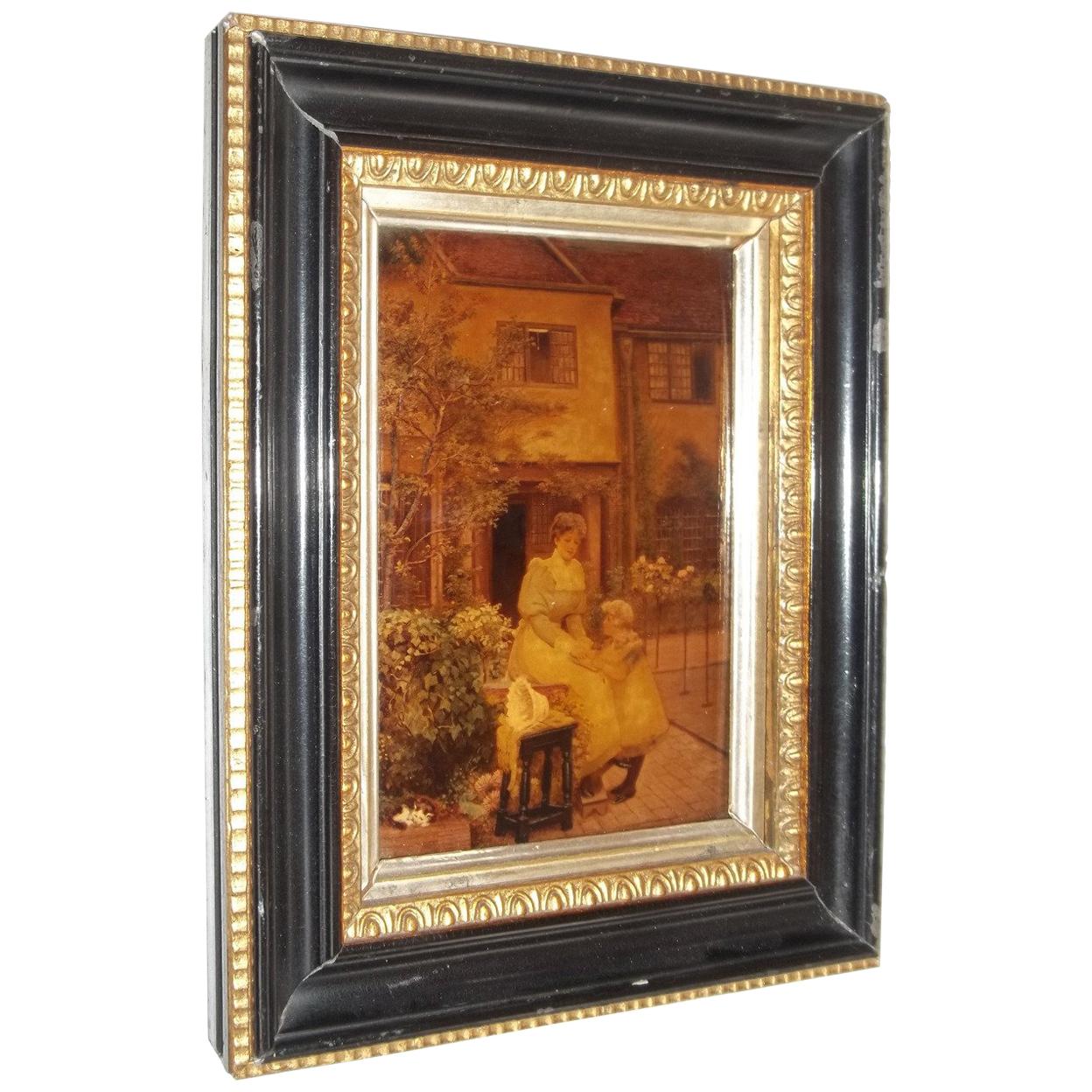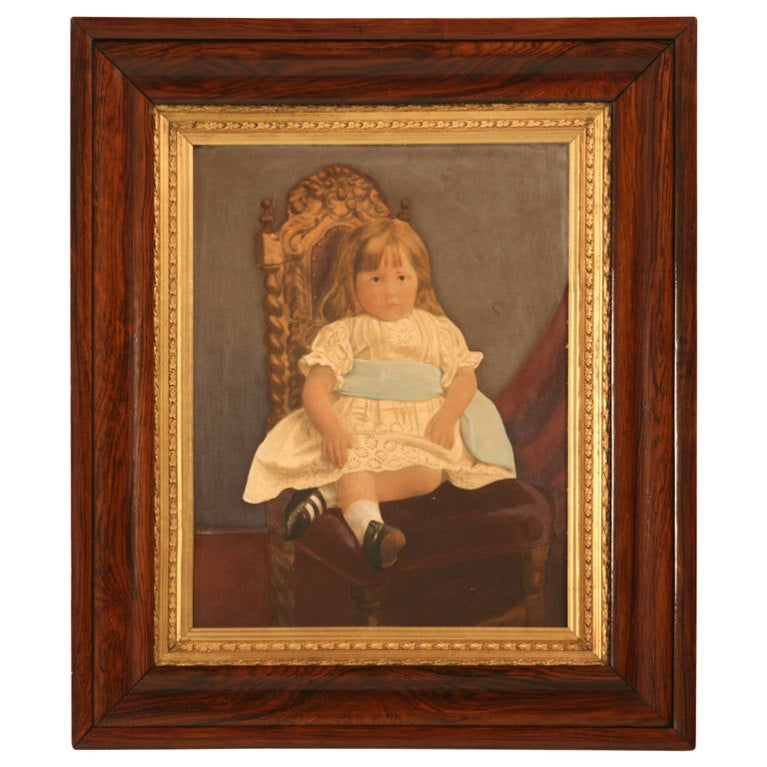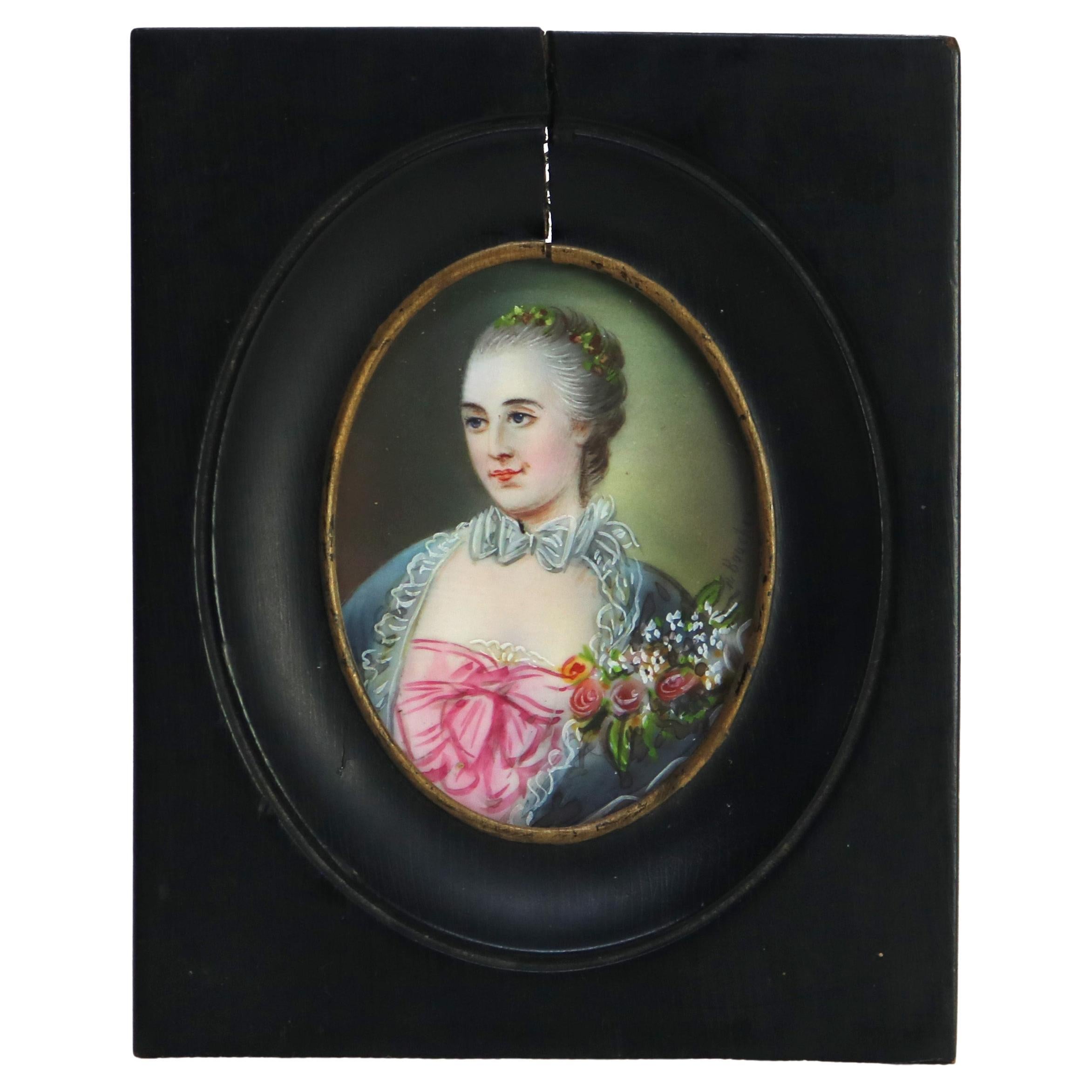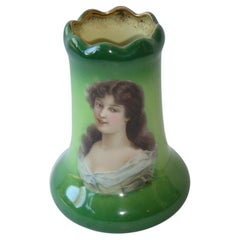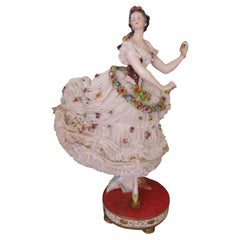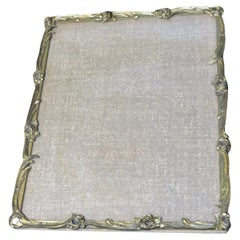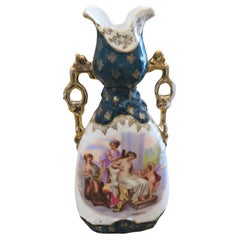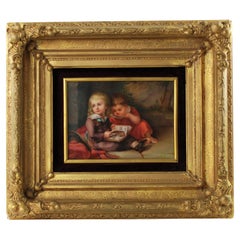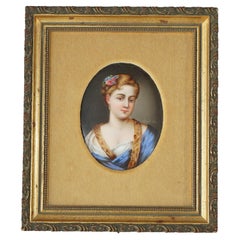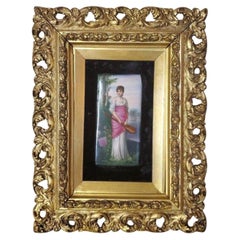Items Similar to Beautiful Framed 19TH C Painting on Porcelain Woman Children Charles Chaplin
Want more images or videos?
Request additional images or videos from the seller
1 of 8
Beautiful Framed 19TH C Painting on Porcelain Woman Children Charles Chaplin
$4,320
$18,00076% Off
£3,275.15
£13,646.4776% Off
€3,775.39
€15,730.7776% Off
CA$6,084.03
CA$25,350.1176% Off
A$6,746.74
A$28,111.4076% Off
CHF 3,544.91
CHF 14,770.4576% Off
MX$82,433.64
MX$343,473.5276% Off
NOK 44,351.65
NOK 184,798.5476% Off
SEK 41,631.60
SEK 173,46576% Off
DKK 28,184
DKK 117,433.3176% Off
About the Item
The Following Item we are offering is a Beautiful Museum Quality Painting on Porcelain of a Woman surrounded by Cherubs holding Garland. Magnificently done with Outstanding Detail. Framed in a Beautiful Wooden Frame, inscribed Ch. Chaplin. Taken out of the Penthouse Estate of the President of Prestige Jewelers Upper East Side, New York City.
Framed Measurements: 24" H x 33" W
Charles Joshua Chaplin (8 June 1825 – 30 January 1891) was a French painter and printmaker who painted both landscapes and portraits. He was an accomplished artist mastering different techniques such as pastels, lithography, watercolor, chalk, oil painting and etching. He was best known for his elegant portraits of young women.
Charles Joshua Chaplin was born on 8 June 1825 in Les Andelys, Eure, France. His mother, Olympia Adelle Moisy, was French, whereas his father, John Chaplin, was an art broker from England. Charles Chaplin spent his whole life in France, becoming a naturalized citizen in 1886.[1][2] He studied at the École des Beaux-Arts in Paris from 1840, and he took private lessons in the studio of Michel Martin Drolling, whose apprentices included Paul Baudry, Jules Breton and Jean-Jacques Henner. Later he also taught at the École des Beaux-Arts.[2]
In 1845 he entered the Salon de Paris, the official art exhibition of the Académie des Beaux-Arts, as a portrait and landscape painter with the painting Portrait of the Artist's Mother. Chaplin conducted art classes specifically for women at his studio. The American artist Mary Cassatt, the French artist Louise Abbéma and the English artist Louise Jopling were among Chaplin's students. His son Arthur Chaplin was also a painter. Chaplin died on 30 January 1891 in Paris as a wealthy man and is buried in the Père Lachaise Cemetery.[3][4]
Chaplin made his debut at the Salon with portraits, but he also painted landscapes, particularly the countryside of Auvergne. His early works, from 1848 to 1851, were painted in a more realistic style, and are characterized by an interest in realism, which was a style that had been reestablished in France by the French Second Republic, that had the motto Liberté, égalité, fraternité, and was ruled for three years by the republican government of France from the 1848 Revolution until the 1851 coup by Louis-Napoléon Bonaparte. Realism was an artistic movement that began in France in the 1850s, after the 1848 Revolution.[5] From the late 18th century Romanticism dominated French art and literature but was spurned by Realists, who revolted against the display of the emotions of the Romantic movement, seeking to depict real and characteristic contemporary individuals and situations with truth and accuracy.[6]
Chaplin painted many works in his early days, including floral studies that were displayed at the Salon de las Flores. Later, in the late 1850s, he abandoned naturalism, his earlier style, exchanging it for a more graceful, elegant and supple technique that brought him a certain notoriety in France during his time as a portrait painter; as such he embraced the idyllic and voluptuous and fashionable style of the prominent French painter, François Boucher (1703–1770).[7]
He also embraced the tradition of the great English portraitists. He developed his very own style of painting but was inspired by the British painters Joshua Reynolds and Thomas Gainsborough. He used to engrave the works of the Dutch artist Pieter Paul Rubens and gained further influence from his work.[2]
Later work
Gradually the muddy colours used by Chaplin transformed into white, grey and pink, depicting his models with an opalescent, mother-of-pearl complexion by applying a subtle palette of rosy flesh tones and light greys. After painting portraits and trying his skills on ornamental painting, Chaplin took up genre painting in the 1850s. His favourite subjects are the feminine grace of a young woman’s everyday life. He portrays women in several poses: resting; grooming; singing; and reading. He captures them with lightness and carelessness and accentuates the decorative elements of the composition.[2]
Empress Eugénie, the wife of Napoleon III and an admirer of the "Pompadour style", rapidly fell under the enchantment of the painter's neo-Rococo works. Chaplin was among Napoleon III and Empress Eugénie’s favourite court artists. In 1859, when his portrait of Aurora was banned by the judges of the Salon as "too erotically suggestive", Napoléon III defended Chaplin and overturned the disqualification order.[8] He was similarly valued as an interior decorator and was appointed to remodel the decor of Empress Eugénie's rooms.[8]
His sensual portraits of women and young girls, often with models posed erotically in hazy surroundings and frequently wearing transparent clothing, attracted the interest of the high society and aristocracy of Paris during the French Third Republic (1870–1940) guaranteeing his success and wealth. He was one of the most popular painters of his time, but nowadays his work is almost unknown, in spite of the fact that his works hang in many major museums around the world.[2]
He employed his Rococo style for his mythological scenes and genre scenes paintings. His genre pictures formed a significant part of his work. In 1861, working as a decorative painter. Chaplin painted the doors and several glass panels above them of the Salon des Fleurs in the Tuileries Palace.[3] The Palace was gutted by fire in 1871 and its ruins swiftly demolished.[9] He also undertook decorating work in the Salon de l’Hémicycle of the Palais de l’Elysée.[3]
Honours and awards
A Song Silenced, Private collection.
As a member of the Académie royale de peinture et de sculpture, Chaplin exhibited his paintings at the Salon de Paris, the official exhibition venue of members' work. He began exhibiting his paintings at the French Artists' Salon in 1845 and was represented there habitually each year. These exhibitions made him one of France's most famous portrait artists. Commencing in 1847, his work was exhibited regularly at the Royal Academy in London.[8]
During his lifetime he received acclamation for his artistic talents by the award of several medals: a third class medal in 1851; a second class medal the following year; and an Honour Medal in 1865. He was declared Chevalier de la Légion d’Honneur in 1879,[8] also known as The National Order of the Legion of Honour, it is a French order established by Napoleon Bonaparte.[10] The Order is the highest decoration in France and is divided into five grades: Chevalier (Knight), Officier (Officer), Commandeur (Commander), Grand Officier (Grand Officer), and Grand Croix (Grand Cross).[11] Chaplin was elevated to Officer in 1881.[8]
Chaplin's artistic talent was admired by renowned writers, painters and critics such as Arsène Houssaye, Émile Zola and Théophile Gautier. Édouard Manet felt Chaplin knew "the smile of a woman".[2] It was his portraits of young women that gained him particular success.[7]
His works can be viewed in the French museums of Bordeaux, Bayonne, Bourges, Mulhouse, Paris, Reims, Rouen, Saintes, Charente-Maritime, and the Louvre Museum Graphic Art Database. Outside France his works can be found in the Hermitage Museum, Saint Petersburg, at the Metropolitan Museum of Art, the Harvard Art Museums in Massachusetts and the Indianapolis Museum of Art in Indiana.[12] Chaplin has several paintings in a public collection in the United Kingdom at the Bowes Museum.[13]
- Dimensions:Height: 13 in (33.02 cm)Depth: 6 in (15.24 cm)
- Materials and Techniques:
- Place of Origin:
- Period:
- Date of Manufacture:1900s
- Condition:
- Seller Location:New York, NY
- Reference Number:1stDibs: LU9623238952602
About the Seller
5.0
Vetted Professional Seller
Every seller passes strict standards for authenticity and reliability
1stDibs seller since 2024
28 sales on 1stDibs
Typical response time: 14 hours
- ShippingRetrieving quote...Shipping from: New York, NY
- Return Policy
Authenticity Guarantee
In the unlikely event there’s an issue with an item’s authenticity, contact us within 1 year for a full refund. DetailsMoney-Back Guarantee
If your item is not as described, is damaged in transit, or does not arrive, contact us within 7 days for a full refund. Details24-Hour Cancellation
You have a 24-hour grace period in which to reconsider your purchase, with no questions asked.Vetted Professional Sellers
Our world-class sellers must adhere to strict standards for service and quality, maintaining the integrity of our listings.Price-Match Guarantee
If you find that a seller listed the same item for a lower price elsewhere, we’ll match it.Trusted Global Delivery
Our best-in-class carrier network provides specialized shipping options worldwide, including custom delivery.More From This Seller
View AllRare Impressive 19th Century Painted Porcelain Vase Portrait of Lovely Woman
Located in New York, NY
The Following Item we are Offering is this Beautiful Estate Antique Numbered Estate Vase, Possibly KPM. Vase is Beautifully done with Fantastic Detail fea...
Category
Antique 18th Century French Vases
Materials
Porcelain, Paint
$600 Sale Price
83% Off
Free Shipping
Rare Important 19th C Estate Large Gorgeous Dresden Porcelain Woman with Dress
By Dresden Porcelain
Located in New York, NY
We are offering this Large Outstanding Estate Monumental Signed Original 19th Century Dresden Woman. German porcelain figural Woman With Intricate Lace and Rosettes throughout all Ha...
Category
Antique 19th Century German Figurative Sculptures
Materials
Porcelain
$4,500 Sale Price
47% Off
Free Shipping
Important Estate Gilt Gold Bronze French Picture Photo Frame
Located in New York, NY
The Following Item we are Offering is A Spectacular Rare One of a Kind 8" x 10" Bronze Photo Hanging Wall Frame. The Frame is Beautifully adorned with Reticulated Bronze work detail....
Category
20th Century English Picture Frames
Materials
Gold Plate
Exquisite 19th Century Austrian Royal Vienna Kaufmann Vase with Women Outdoors
Located in New York, NY
The Following Item we are Offering is a Very Fine Magnificent Royal Vienna Austrian Kaufmann Porcelain Vase. Vase has a Portrait of Maidens Sitting Outdoors with a Child. Finely Deta...
Category
Antique 19th Century Austrian Vases
Materials
Porcelain
$270 Sale Price
70% Off
Free Shipping
Rare Important Gorgeous Dresden Style Sevres Style Porcelain Jewelry Box Casket
By Dresden Porcelain
Located in New York, NY
The Following Item we are offering is a Magnificent Rare Jewelry Casket Box Sevres Porcelain with Gilt Bronze Mounting. Center of Box Top is Finely Detailed with a Beautiful Portrait...
Category
20th Century French Decorative Boxes
Materials
Porcelain
$2,250 Sale Price
50% Off
Free Shipping
Rare Important Gorgeous Dresden Style Sevres Style Porcelain Jewelry Box Casket
By Dresden Porcelain
Located in New York, NY
The Following Items we are offering is a Magnificent Rare Jewelry Casket Box Sevres Porcelain with Gilt Bronze Mounting. Center of Box Top is Finely Detailed with a Beautiful Portrai...
Category
20th Century French Decorative Boxes
Materials
Crystal
$2,250 Sale Price
70% Off
Free Shipping
You May Also Like
19th Century KPM Porcelain Plaque after Portrait by Christian Leberecht Vogel
By Christian Leberecht Vogel, KPM Porcelain
Located in Cincinnati, OH
This charming 19th century KPM porcelain plaque depicts a painting after German artist Christian Leberecht Vogel's popular work Die Söhne des Künstlers, executed in 1793. The beautif...
Category
Antique 1860s German Romantic Paintings
Materials
Porcelain
Antique KPM School Portrait Painting of a Young Woman on Porcelain Late 19th C
Located in Big Flats, NY
An antique plaque in the manner of KPM offers hand painted portrait of a young woman on porcelain, seated in giltwood frame, 19th century
Measures- 9.5''H x 8''W x 1.25''D
Category
Antique 19th Century Paintings
Materials
Porcelain, Paint
$760 Sale Price
20% Off
Victorian Crystoleum Picture of Mother and Child in Original Frame, circa 1890
Located in Lincoln, Lincolnshire
This is a good late Victorian Crystoleum picture, circa 1890.
The picture shows a woman and girl (mother and daughter) in the pathway of an old house. The glass is concave. The fram...
Category
Antique Late 19th Century British Victorian Paintings
Materials
Glass, Wood
19th Century KPM Berlin Painted Porcelain Plaque, Die Lautenspielerin
By KPM Porcelain
Located in Forney, TX
A late 19th century Berlin KPM painted porcelain plaque, Die Lautenspielerin, in pierced foliate giltwood frame, painting after Friedrich August von Kaulbach (German, 1850-1920). Mod...
Category
Antique Late 19th Century Victorian Paintings
Materials
Porcelain, Giltwood, Paint
Original Antique Victorian Painting "A Girl w/ Blue Sash" in Rosewood Frame
Located in Chicago, IL
Late 19th century American Victorian Painting of a child Dressed in her best Victorianesque dress, this little girl must have been bored to death by the time tis painting was finishe...
Category
Antique 19th Century American Late Victorian Paintings
Materials
Rosewood, Paint
Miniature Antique French Portrait Painting on Celluloid of Woman, Framed, C1880
Located in Big Flats, NY
Miniature Antique French Portrait Painting on Celluloid of Woman, Framed, C1880.
Measures- 5.75"H x 4.75"W x 1"D; Sight: 2.25" x 3"...
Category
Antique Late 19th Century Paintings
Materials
Paint
$280 Sale Price
20% Off
More Ways To Browse
Dutch Engraved Glass
Vintage Glass Garland
Empress Eugenie
18th Century American Painting
18th Century French Romantic Painting
Paris Porcelain Pink
Portrait Of Napoleon Iii
Dutch Artist Black And White
Louvre Doors
18th Century Massachusetts
Thomas Holland Sculpture
Erotic Glass
Vintage 5 Panel Door
18th Century Vintage Clothing
Palais Royal Mother Of Pearl
Jules Clothing France
Pearl Royale
Woman With Bow Sculpture
